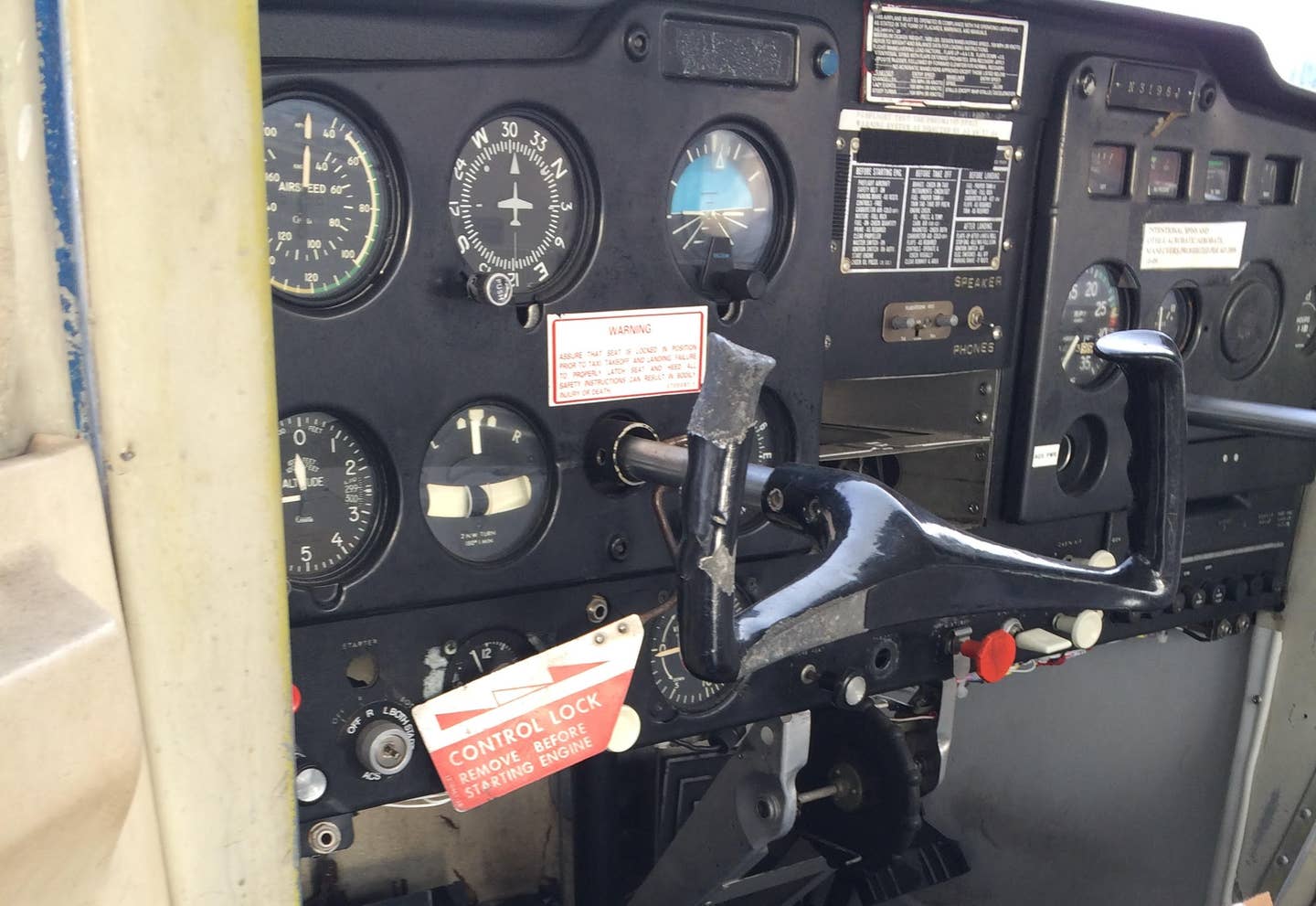The FAA Answers Some Interesting Questions From Pilots
The agency’s legal interpretation letters provide some thought-provoking case studies.

Reading the FAA’s legal interpretation letters can help minimize confusion for pilots. [File photo: Adobe Stock]
As I mentioned last week, the FAA often uses legal Interpretation letters to clear things up for pilots when confusion arises.
If you read the letters themselves, they'll give you a window into how the FAA's legal officers think and provide context for how to conduct your operations in the future.
Here are a few examples:
‘Can I Advertise My Trip on Social Media?’
With the growth of social media, one private pilot sought to clarify that, if he shared his trip plans on Facebook or other public forums and included that he'd have open seats on board his airplane, if this would be considered 'holding out’—especially if the people who would accompany him paid their pro-rata share.
Furthermore, the question of "common purpose" came up, because in the scenario, the pilot wanted to know if the people who opted to go on the trip went for a reason separate from his, if this would qualify under that law.
In the Haberkorn-2011 letter, the FAA's chief counsel offered a response to Haberkorn and explained the nuances of the law. If you read the letter, you'll notice that it includes the appropriate FARs in question and the FAA's interpretation of the law related to the scenario. In this case, the FAA deemed that if the pilot offered people in his online social network seats on his flight, this would not be allowed, even for people just in his circle.
“Letters of interpretation are good tools for pilots and offer insight into confusing rules that are ambiguous or no longer apply.”
"Even if you limit the transportation services to a class or segment of the general public (such as Facebook users), it may still be considered holding out if it expresses a willingness to provide transportation for all within this class or segment to the extent of its capacity," the FAA said in its response. In other words, the medium didn't matter as much as the offer to passengers. What surprised me is that the FAA's said that a pilot's reputation of being generous, even without a direct offer to passengers, could create a problem, even if no one took the trip.
"There may also be a holding out without advertising, where a reputation to serve all is sufficient to constitute an offer to carry all customers. Whether or not the holding generates little success is not a factor," the letter said.
But how about the common purpose segment? If the pilot was going on the trip, for example, to attend a wedding, and the passengers chose to go along for a baseball game, would that fall under the common purpose rule in the applicable FAR? The FAA said it would be best to determine this on a case-by-case basis. However, the specific activities don’t matter as much as the fact that both pilot and potential passengers had to do business or other pursuits in the destination city. So, was there a common purpose in the wedding-baseball game scenario?
"Based on these facts, there appears to be a bona fide common purpose, as the pilot, not the passengers, dictated the destination. Both you and your passengers have personal business to conduct on Long Island. The purpose of this flight is not merely to transport your passengers to Long Island," the FAA said in its letter.
Let's try another.
‘Do I Need a Parachute for Spin Training?’
I can see why this comes up. The first time I took a form of spin training, it felt like my brain was rattling around in my skull, especially when the airplane began its downward cycles and all I saw were the housetops. You might think you ought to have a parachute on for personal safety reasons—just in case.
This is a part of what the FAA tried to clarify in its Fitzpatrick-Spartan College letter in 2018. In the letter, a former director of flight operations at the Part 141 school—Spartan College—wanted to clarify the operational rules, particularly FAR 91.307c. The reg generally says that the pilot and passengers must wear parachutes if they plan to intentionally bank an airplane more than 60 degrees or pitch the nose up or down 30 degrees. What may have added to the pilot’s confusion is that the regulation essentially said the rule didn't apply if the flight maneuvers were required for any certificate—in which case, it seemed that a pilot and passenger wouldn’t need parachutes.
Well, to clear things up, in its response, the FAA said this: "Regardless of what certificate or rating the applicant is seeking, an acrobatic maneuver required for any certificate or rating (even one not presently sought by the student) may be performed without parachutes when done by or at the direction of a certificated flight instructor." The most important part of that seems to be that no parachutes are needed as long as a flight instructor directs the student to complete a spin. Furthermore, it doesn't matter if spin training is required for the particular rating if the instructor thinks the student needs to have it, since "spin instruction is required for certain other certificates or ratings."
How about one more? You may be wondering, does the FAA ever change its position if the world around it changes? The following letter shows that it does.
‘Do I Still Need to Fly Three Different Approaches?’
With the phasing out of VOR navigation aids, students and instructors have wondered how feasible it will be for instrument training that requires students to complete three instrument approaches with three different navigation aids, such as with an ILS, the GPS, and a VOR navaid. Initially, in a 2008 letter, Glaser (2008), the FAA said the student had to use different systems.
In another letter, Pratte (2012), the FAA expanded the number of approaches that would qualify, calling the initial interpretation "overly restrictive" and unable to account for future navigational aids.
However, in February 2022, the FAA issued a notice to say for the reasons it would provide in the memorandum, it was rescinding the interpretations of the previous letters. The essence of its explanation is that a Flight Standards division was best positioned to determine what qualifies as “navigation systems,” according to the applicable FAR. Pilots who subscribed to the FAA Safety website would've been notified of this—the site is also where other pertinent public notifications are posted and it’s a good tool for current information.
In that notice, the FAA said, "On February 28, 2022, the FAA rescinded both the Glaser and Pratte legal interpretations, stating the regulation's plain language requires three different types of approaches, not three different navigation systems." It said CFIs and examiners should be aware of this change, especially to save students the headache and expense of trying to locate a VOR. "Students may meet the requirements for an instrument rating by performing three different approaches, regardless of the source of navigation," the agency said.
Letters of interpretation are good tools for pilots and offer insight into confusing rules that are ambiguous or no longer apply. Based on my reading, many of them relate to safety, compensation, and what pilots can log as flight times. These seem to be the biggest concerns for most pilots at the end of the day. As you phase out of flight training into general or business aviation, you will do well to keep this resource in mind.

Subscribe to Our Newsletter
Get the latest FLYING stories delivered directly to your inbox






